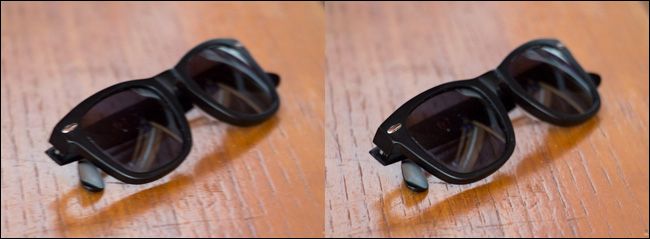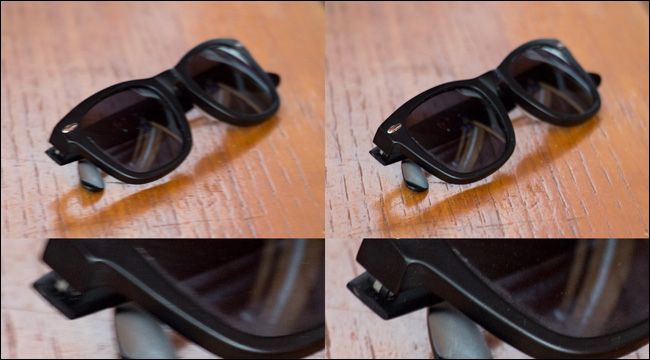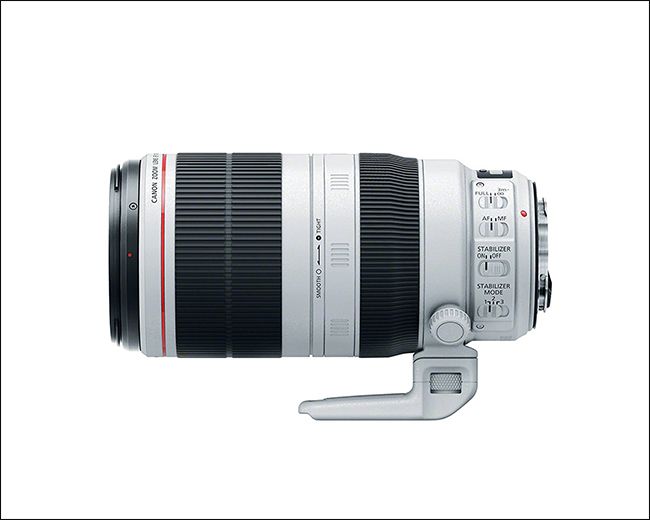Quick Links
Image stabilization is a feature of some lenses and cameras that avoids the blur of a shaky camera. By counteracting that shake, you can use a slower shutter speed than you normally would, without getting a blurry photo. This is especially useful for night photos, or other situations where slow shutter speed is a necessity.
When we talk about image stabilization and photography, we’re normally talking about optical image stabilization, which is found in a lot of high end lenses (and some high-end smartphones like the iPhone 7). Canon calls the feature Image stabilization (IS) and Nikon calls it Vibration Reduction (VR). With optical image stabilization, part of the lens physically moves to counteract any camera movement when you take the picture; if your hands are shaking, an element inside the lens shakes too to counter the movement.
Other cameras, including some smartphones like the iPhone 6S, can have a feature called virtual image stabilization. With virtual image stabilization, the lens doesn’t physically move; instead, the movement is recorded and the camera tries to reverse any shake algorithmically. It's not nearly as effective, but it's better than nothing.
Today, we’re going to talk a bit about how to use image stabilization effectively. For the purposes of this guide, we're going to focus on the optical image stabilization found in high-end cameras.
The Reciprocal Rule: How Slow Can You Go?
With a regular lens, the slowest shutter speed you can still have sharp pictures with is generally assumed to be the reciprocal of the focal length of the lens (or the full frame equivalent focal length if you’re using a crop sensor camera). This means that if you’re using a 100mm lens on a full frame camera like a Canon 5D MKIV, the slowest shutter speed you can get away with is 1/100th of a second. For a 50mm lens, it’d be 1/50th of a second.
If you’re using that same 100mm lens on a camera with a crop factor of 1.6 like a Canon EOS Rebel T6, then it’s equivalent to a 160mm lens on a full frame camera, so the slowest shutter speed you can safely use is 1/160th of a second; the 50mm lens is equivalent to 80mm for a shutter speed of 1/80th of a second.
It’s important to note that the reciprocal rule only applies to camera movement. If you’re taking a photo of a fast moving object, you might need to use a shutter speed way faster than what the reciprocal rule says you can get away with.
How Image Stabilization Allows for a Slower Shutter Speed
With image stabilization turned on, you can use a shutter speed between two and four stops slower than what you otherwise could. Let's go back to our 100mm lens example. Instead of a minimum shutter speed of 1/100th of a second, image stabilization would allow you to use a shutter speed as slow as about 1/10th of a second and still have a sharp image (at least in ideal circumstances). For the 50mm lens, you’d be able to go as low as around 1/5th of a second.
In the image below, I shot the photos with a 200mm equivalent lens with a shutter speed of 1/40th of a second. In the one on the left, image stabilization is turned off; in the one on the right, it’s turned on. It’s easy to see how effective image stabilization can be in the right circumstances.
If you’re shooting at night or in other low light situations, being able to get away with a slower shutter speed can make a big difference. You don’t need to crank your ISO so high, or use a really wide aperture, if you don’t want to.
Image stabilization can also help with longer lenses even in good lighting. If you’re using a 300mm lens, the absolute slowest shutter speed you can get away without image stabilization is 1/300th of a second. This is still a pretty fast shutter speed if you’re using a narrow aperture and low ISO. With image stabilization, though, you could go to around 1/50th of a second if you needed, but you could also just go to a slightly slower shutter speed like 1/200th of a second. This lets in a little bit of extra light, but more importantly makes it more likely you’ll get sharp images. Just because you can go to a really slow shutter speed, doesn’t mean you should.
Again, it’s important to note that image stabilization only helps with camera movement. It has no effect whatsoever on any movement of the subject. Even a person standing still for a portrait moves a little bit; if you use a shutter speed that’s too slow, their movement will show up in the image.
The Problems With Image Stabilization
The biggest problem with image stabilization is the cost. Canon’s EF 70-200mm f/4L USM which doesn’t have image stabilization costs $599, while the EF 70-200mm f/4 L IS USM---which does---costs $1099. Other than one having stabilization, the two lenses are almost identical. The same pattern holds true with a lot of other lenses, with one version without stabilization that costs hundreds of dollars less than the version with stabilization.
If you can afford to pony up for image stabilization, it can be a great feature, but unless you’re sure it’s something you are going to use, the extra cost might not be worth it. If you shoot a lot with long lenses or in low light, it can be great, but if you don’t, it might be a waste of money.
Image stabilization can also have some weird effects if you use it in the wrong situations. Once your shutter speed is above around 1/500th of a second, image stabilization won’t really improve your images. Your muscles don’t twitch 500 times a second! Instead, it can actually have a detrimental effect on the sharpness of the image because of the moving elements in the lens. Although it’s mainly anecdotal, most professional photographers turn image stabilization off unless they absolutely need it for this reason.
By the same token, if you’re stabilizing your lens in another way, like with a tripod, image stabilization should be turned off. At best, it will do nothing, and at worst it will actually make your photos blurrier.
Finally, image stabilization also uses a bit of power. If you’re trying to conserve battery life, turn it off.
Apart from those downsides, image stabilization really is is a great feature, and it's becoming standard in more and more lenses. Just make sure it's worth the extra cost.



